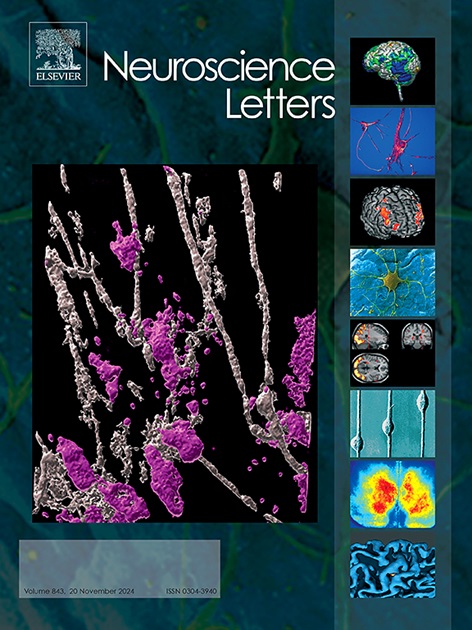光触发传递使全脑范围内的胃内葡萄糖感觉动力学映射
IF 2
4区 医学
Q3 NEUROSCIENCES
引用次数: 0
摘要
内感受为大脑监测胃肠道。胃内的化学信息体现在生物分子中,如营养物质、免疫因子和微生物代谢物,这些生物分子调节着动物的状态。虽然这些胃内分子的传感器已经被确定,它们的传入途径已经阐明,但它们的感觉动力学仍然很少被探索。为了满足这一要求,需要直接操纵胃肠道化学成分,而不需要口腔介入或侵入性。在这里,我们开发了一种光触发胃内递送试验,并证明了其在调节幼体斑马鱼营养含量方面的功效。利用斑马鱼幼体神经成像的优势,我们成功地检查了全脑对胃内葡萄糖输送的反应。此外,同样广泛的反应模式也被观察到在幼龄斑马鱼和有摄食经验的幼龄斑马鱼身上,这表明一个天生的全脑网络用于胃内葡萄糖感知。本文章由计算机程序翻译,如有差异,请以英文原文为准。
Light-triggered delivery enables brainwide mapping of intragastric glucose sensory dynamics
Interoception monitors the gastrointestinal tract for the brain. The intragastric chemical information is embodied in the biological molecules, like nutrients, immune factors, and microbe metabolites, which modulates animal states. Albeit the sensors for these intragastric molecules have been identified and their afferent pathways have been elucidated, their sensory dynamics remains less explored. To fulfill this requirement, a direct manipulation of the gastrointestinal chemical contents, without oral involvement or invasiveness, is needed. Here we have developed a light-triggered intragastric delivery assay and demonstrated its efficacy in modulating the nutrient content of larval zebrafish. Taking the advantage of the larval zebrafish in neural imaging, we succeeded in examining the brainwide responses to the intragastric glucose delivery. Furthermore, a similarly broad response pattern was observed on both the naive and the feeding experienced larval zebrafish, suggesting an innately brainwide network for intragastric glucose sensing.
求助全文
通过发布文献求助,成功后即可免费获取论文全文。
去求助
来源期刊

Neuroscience Letters
医学-神经科学
CiteScore
5.20
自引率
0.00%
发文量
408
审稿时长
50 days
期刊介绍:
Neuroscience Letters is devoted to the rapid publication of short, high-quality papers of interest to the broad community of neuroscientists. Only papers which will make a significant addition to the literature in the field will be published. Papers in all areas of neuroscience - molecular, cellular, developmental, systems, behavioral and cognitive, as well as computational - will be considered for publication. Submission of laboratory investigations that shed light on disease mechanisms is encouraged. Special Issues, edited by Guest Editors to cover new and rapidly-moving areas, will include invited mini-reviews. Occasional mini-reviews in especially timely areas will be considered for publication, without invitation, outside of Special Issues; these un-solicited mini-reviews can be submitted without invitation but must be of very high quality. Clinical studies will also be published if they provide new information about organization or actions of the nervous system, or provide new insights into the neurobiology of disease. NSL does not publish case reports.
 求助内容:
求助内容: 应助结果提醒方式:
应助结果提醒方式:


